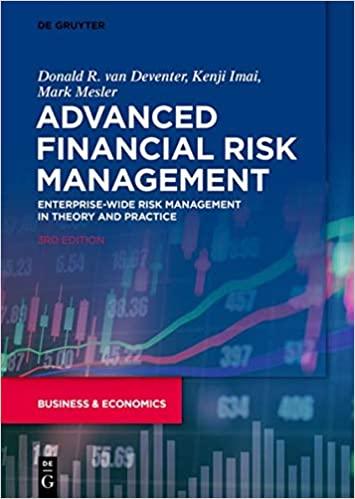Question
The first engagement you are working on is Fish N Things Pty Ltd (hereafter, Fish N Things, or the Company) for the financial year ended
The first engagement you are working on is Fish N Things Pty Ltd (hereafter, Fish N Things, or the Company) for the financial year ended 30 June 2020. Fish N Things is a proprietary company, which supplies fish-keeping equipment, live fish and aquatic plants to retailers, including Petbarn Pty Ltd, Pet Stock Pty Ltd and several specialised aquarium stores.[1] It is an industry leader in Australia, shipping products to all states and territories. The Company has 24 shareholders, and most of them are closely involved in the business.
The Company has a close-knit culture and a family like atmosphere. Most staff members are keen aquarium enthusiasts themselves and are passionate about providing the best product to other hobbyists.
The companys products and livestock are very popular. However, demand was weaker in March and April 2020, as retailers were forced to close during that time because of COVID-19 and government restrictions. During the stage two lockdown, pet stores (the retailers) could open for business, however due to the restrictions were not able to replenish their stock. This means the pet stores could not order from Fish N Things, until the restrictions were eased in May. As a result, the company temporarily shut down its business from 1 March to 10 May.
The closure impacts Fish N Things in several ways. First, sales were close to nil in March and April, but rebounded in May to an unusual high, as many people were drawn into fishkeeping after the lockdown. Second, when the company was temporarily shut down, fish and live plants still needed to be cared for, which increased the cost of livestock inventories. This included the additional food, fertiliser, equipment running cost and livestock fatality. Third, COVID-19 restrictions in countries, where the companys equipment are sourced, disrupted the companys supply chain. As a result, manufacturing and shipment has been struggling to keep up with higher sales since May. A sales representative at the company reveals to you that at times he and his colleagues have had to sign up sales contracts when the products are still on container ships.
The economic downturn due to COVID-19 impacted the retailers significantly. Some smaller retailers had cash flow issues during the lockdown: they are struggling to pay their suppliers and remain in business. This had a knock-on effect on the Company. Fish N Things have borrowed an $119,000 in May from NAB to provide additional working capital but the loan subject to a debt covenant the company needs to keep its gross profit margin above 0.35.
The company was incorporated in 1989 and remains a private company till this day. Its founder and CEO, John Lyon, intended to sell his share of the business and retire in early 2021. Your firm has been the companys auditor since its incorporation and no material misstatements were detected in the previous audits except for the 2019 financial year. In the 2019 audit, the audit team identified a $250,000 material misstatement in sales and accounts receivable account, which would overstate the 2019 profit had it went undetected. This was caused by a software failure, which duplicates some sales transactions in sales and accounts receivable data files. The problem has since been resolved by an IT expert from the audit firm.
You are to audit the client under the supervision of Audit Senior, Elizabeth Carson.
[1] While Petbarn and Pet Stock are real businesses, Fish N Things is fictitious.
[2] There were no staff redundancies, lay-offs or pay cuts during the shut-down period.
[3] The gross accounts receivable as at 30 June 2018 is $130,000.
[4] The inventory balance at 30 June 2018 is $375,000.

(a) Identify two accounts that have a risk of material misstatement. For each account identified, use the information in the case to briefly explain why it is at risk and identify the audit objectives to be tested to manage the risk.

(b) Perform two analytical procedures using the days to collect accounts receivable and inventory turnover ratio. Which accounts are likely to be misstated? Please identify the audit objective that should be tested.

Step by Step Solution
There are 3 Steps involved in it
Step: 1

Get Instant Access to Expert-Tailored Solutions
See step-by-step solutions with expert insights and AI powered tools for academic success
Step: 2

Step: 3

Ace Your Homework with AI
Get the answers you need in no time with our AI-driven, step-by-step assistance
Get Started


